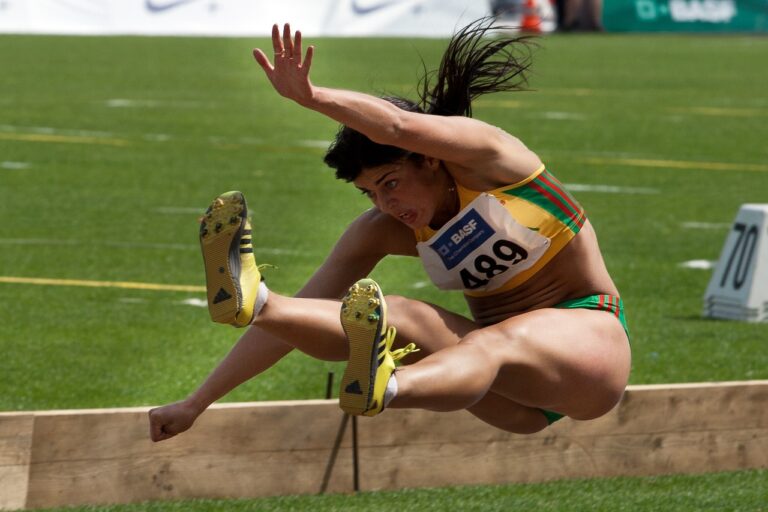Assessing the Future of Ball Tracking Technology in Cricket
Reddy Anna Book, Reddy Book Club: Ball tracking technology has witnessed a significant evolution in cricket over the years. Initially introduced as a means to enhance the viewing experience for fans, it has now become an integral part of umpiring decisions. The earliest forms of ball tracking technology utilized basic tools to map the trajectory of the ball, providing rudimentary insights into its path.
As technology advanced, so did the capabilities of ball tracking systems in cricket. With the introduction of sophisticated cameras and algorithms, the accuracy and precision of ball tracking technology improved significantly. This evolution has not only revolutionized how umpires make decisions on the field but has also provided players and coaches with valuable data to analyze and improve their performance.
Challenges Faced in Implementing Ball Tracking Technology
Ball tracking technology has revolutionized the way cricket matches are analyzed and understood, offering valuable insights into the game. However, its implementation has not been without challenges. One significant hurdle is the resistance from traditionalists who are wary of embracing new technology and fear it may undermine the authority of on-field umpires. This reluctance can hinder the adoption of ball tracking technology and delay its widespread acceptance in the cricketing community.
Another challenge faced in implementing ball tracking technology is the issue of cost and accessibility. Acquiring and maintaining the necessary equipment and software can be expensive, especially for smaller cricketing nations or clubs with limited financial resources. Moreover, ensuring that the technology is consistently accurate and reliable requires ongoing investment in training and updates, which can pose logistical and financial challenges for stakeholders.
Advantages of Ball Tracking Technology in Cricket
Ball tracking technology in cricket provides a valuable tool for assessing the trajectory and path of the ball as it moves through the air. By utilizing high-speed cameras and computational algorithms, this technology offers precise data on variables such as ball speed, trajectory, and impact points. This information not only aids umpires in making more accurate decisions but also provides players and coaches with detailed insights into the dynamics of each delivery.
One significant advantage of ball tracking technology is its ability to enhance the transparency and fairness of on-field decisions. By supplementing the umpires’ judgment with objective data, this technology helps reduce human error and controversy surrounding crucial moments in the game. Furthermore, the real-time visuals of ball tracking can add an extra layer of excitement for fans, who can now understand and appreciate the intricacies of bowling techniques and batting strategies like never before.
Impact of Ball Tracking on Umpiring Decisions
Ball tracking technology has revolutionized the way umpiring decisions are made in cricket. By providing precise data on the trajectory of the ball, this technology has significantly reduced human error in judging LBW appeals. Umpires can now make more accurate decisions based on the information provided by ball tracking systems, leading to fairer outcomes during matches.
The impact of ball tracking on umpiring decisions has also enhanced the transparency of the game. Fans and players alike can now see visual representations of how the ball would have behaved, helping to demystify contentious decisions. This increased visibility has brought a new level of accountability to umpiring decisions, fostering a greater sense of trust in the fairness of the game among stakeholders.
Innovations in Ball Tracking Technology
In recent years, ball tracking technology in cricket has witnessed significant advancements and innovations. One of the key innovations is the introduction of ultra-high-speed cameras that capture the trajectory of the ball with unparalleled accuracy and detail. These cameras are capable of capturing the movement of the ball at over 500 frames per second, providing precise data that can be analyzed to track the path of the ball in real-time.
Another notable innovation is the integration of artificial intelligence algorithms into ball tracking systems. By leveraging machine learning techniques, these systems can predict the trajectory of the ball more accurately, taking into account various factors such as pitch conditions, weather, and player actions. This advancement has significantly enhanced the reliability of ball tracking technology, enabling umpires to make more informed decisions based on data-driven insights rather than mere visual observation.
Accuracy and Reliability of Ball Tracking Systems
Ball tracking systems have significantly advanced over the years, offering a more precise and detailed analysis of ball movements in cricket matches. These systems use sophisticated technology to track the trajectory of the ball from the bowler’s hand to the batsman, providing valuable data for umpires, players, coaches, and viewers. The accuracy of these systems is crucial in making fair decisions during a game, especially in contentious situations such as LBW appeals and edge detections.
The reliability of ball tracking systems is continuously improving, with developers constantly refining algorithms and integrating new features to enhance performance. The goal is to minimize errors and provide consistent and trustworthy data that can assist umpires in making accurate decisions on the field. While challenges remain in perfecting these systems, their increasing reliability has led to greater acceptance and integration into the fabric of modern cricket, shaping the way the game is played and understood.
Potential Future Developments in Ball Tracking Technology
One of the potential future developments in ball tracking technology is the use of artificial intelligence algorithms to further enhance the accuracy of trajectory predictions. By integrating advanced AI systems into ball tracking software, the technology could become even more precise in providing real-time data on the path of the ball. This innovation has the potential to revolutionize the way cricket matches are analyzed and umpired, as AI-powered ball tracking could offer insights and predictions that were previously unimaginable.
Another exciting development on the horizon is the implementation of virtual reality (VR) technology in ball tracking systems. By utilizing VR headsets, umpires, players, coaches, and fans could potentially experience the game from entirely new perspectives. This immersive technology has the capability to transport individuals onto the field, allowing them to see the ball’s trajectory firsthand and gain a deeper understanding of the nuances of each play. As VR continues to evolve, its integration with ball tracking technology could usher in a new era of cricket viewing experience.
Integration of Ball Tracking Technology in Cricket Broadcasts
Ball tracking technology has rapidly become a staple in modern cricket broadcasts, offering viewers an enhanced viewing experience. By integrating ball tracking technology into broadcasts, spectators are able to witness detailed insights into the trajectory and movement of the ball, providing a deeper understanding of the game. This added layer of analysis enables viewers to appreciate the nuances of the sport and gain valuable insights into the strategies employed by players on the field.
Moreover, the integration of ball tracking technology in cricket broadcasts has revolutionized the way fans engage with the sport. With real-time data and visualizations, viewers are able to analyze key moments of the game in greater detail, fostering a more immersive viewing experience. This seamless integration of technology not only enriches the viewing experience for fans but also contributes to a more informed and interactive cricket-watching community.
Player and Coach Perspectives on Ball Tracking Technology
Player perspectives on ball tracking technology in cricket have been mixed. Some players appreciate the data-driven insights it provides, allowing them to analyze their performance in detail and make necessary improvements. Others, however, feel that too much reliance on technology takes away from the human element of the sport, diminishing the role of intuition and experience in making decisions.
Coaches, on the other hand, often see ball tracking technology as a valuable tool for assessing player performance and strategizing their game plans. The ability to review precise data on ball trajectory, speed, and movement can offer valuable insights into a player’s strengths and weaknesses, helping coaches tailor their training sessions and tactical approaches accordingly. Despite some reservations about the overreliance on technology, many coaches see the benefits of integrating ball tracking technology into their coaching methodologies.
The Role of Ball Tracking in Enhancing Fan Engagement
Ball tracking technology has revolutionized the way fans engage with cricket matches. By providing real-time data and visualizations of deliveries, fans are able to gain a deeper understanding of the game and follow the action more closely. This technology allows viewers to analyze the trajectory, speed, and movement of the ball, enhancing their overall viewing experience. As a result, fans feel more connected to the game and are able to appreciate the skill and strategy involved in each delivery.
Moreover, ball tracking technology has the potential to create a more interactive and immersive viewing experience for fans. With features like predictive analysis and interactive simulations, viewers can engage with the game in a more dynamic way. This not only increases the excitement of watching cricket matches but also serves as an educational tool for fans to learn more about the nuances of the sport. By enhancing fan engagement through ball tracking technology, cricket continues to evolve as a modern and technology-driven sport.
What is ball tracking technology in cricket?
Ball tracking technology in cricket is a system that uses cameras and computer algorithms to track the trajectory of the ball during a match.
How has ball tracking technology evolved over the years?
Ball tracking technology in cricket has evolved from basic trajectory prediction to sophisticated systems that provide detailed analysis of ball movement.
What challenges are faced in implementing ball tracking technology?
Challenges in implementing ball tracking technology include technical issues, calibration of systems, and ensuring accuracy and reliability of the data.
What are the advantages of ball tracking technology in cricket?
The advantages of ball tracking technology in cricket include providing insights for players and coaches, improving umpiring decisions, and enhancing fan engagement.
How does ball tracking technology impact umpiring decisions?
Ball tracking technology can provide additional information to umpires to make more accurate decisions on LBW appeals and other close calls.
What innovations have been made in ball tracking technology?
Innovations in ball tracking technology include improved camera systems, advanced algorithms, and real-time data analysis capabilities.
How accurate and reliable are ball tracking systems?
Ball tracking systems are generally considered to be accurate and reliable, although there may be occasional discrepancies in certain situations.
What potential future developments can we expect in ball tracking technology?
Potential future developments in ball tracking technology include enhanced data visualization, integration with virtual reality systems, and more precise tracking algorithms.
How is ball tracking technology integrated into cricket broadcasts?
Ball tracking technology is often integrated into cricket broadcasts through graphics overlays, replays, and analysis segments to provide viewers with additional insights into the game.
What do players and coaches think about ball tracking technology?
Players and coaches generally see ball tracking technology as a valuable tool for analyzing performance, understanding game dynamics, and improving decision-making.
How does ball tracking technology enhance fan engagement?
Ball tracking technology enhances fan engagement by providing viewers with real-time insights, analysis, and data visualization that make the game more exciting and interactive.







